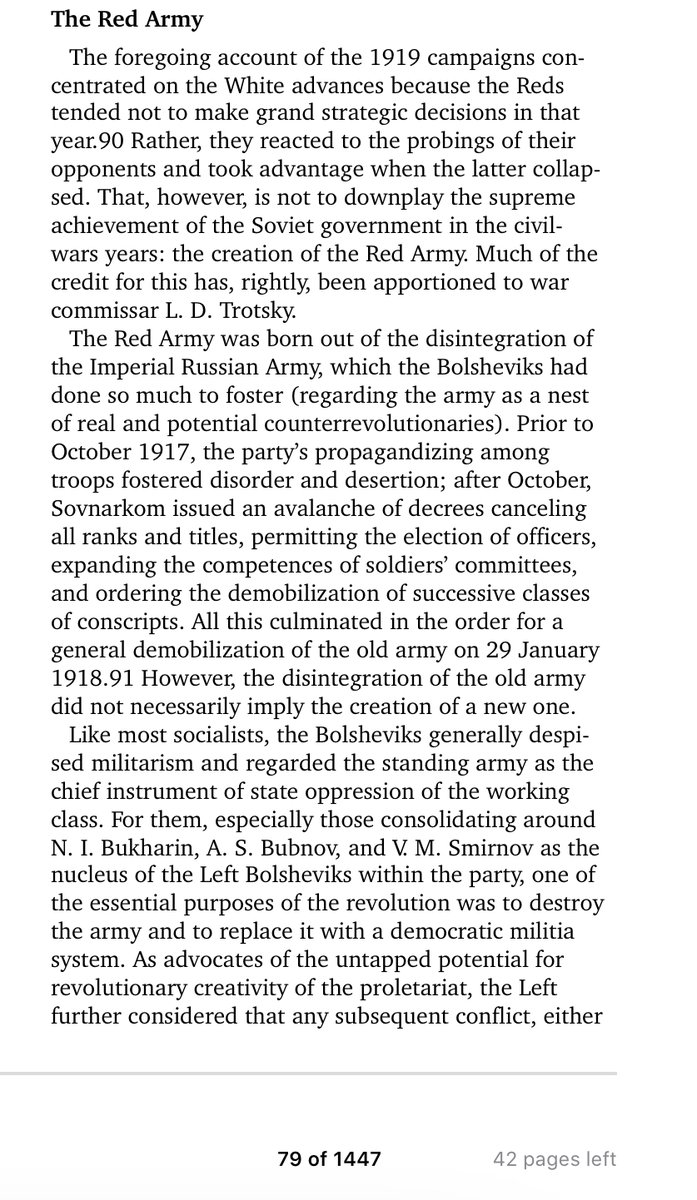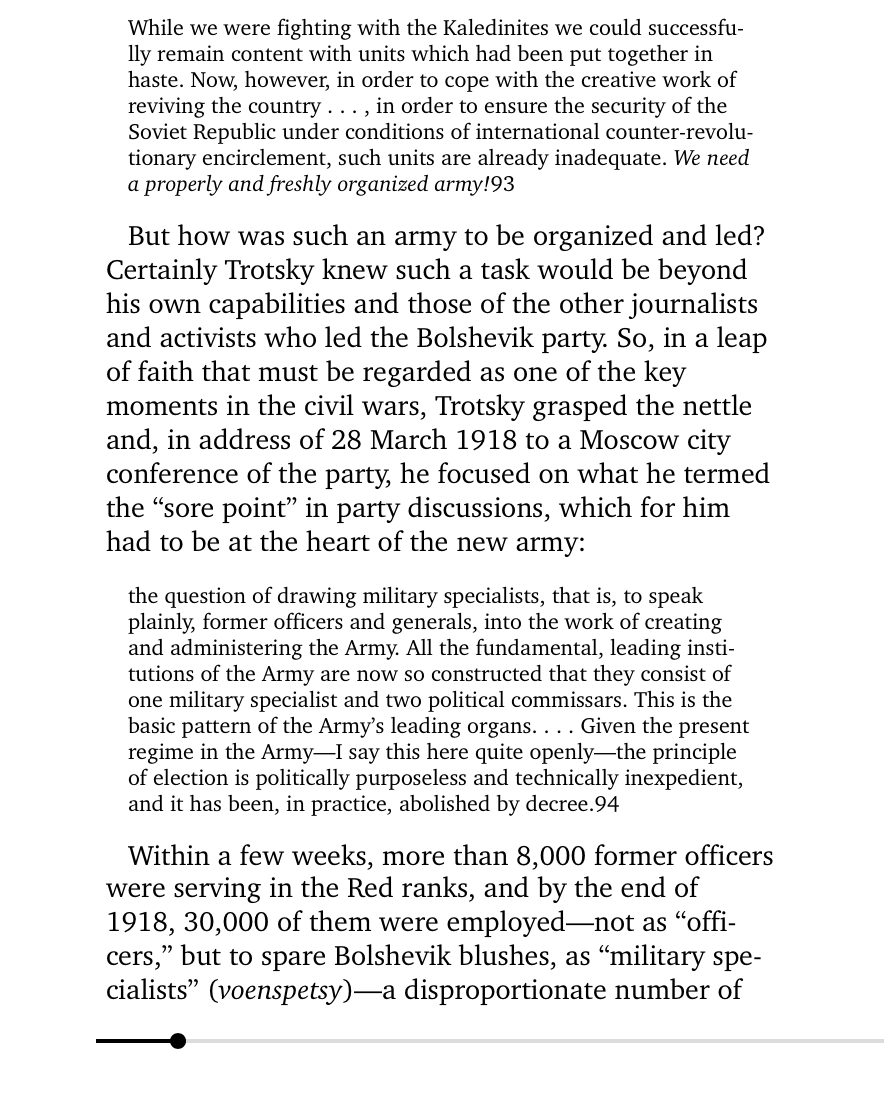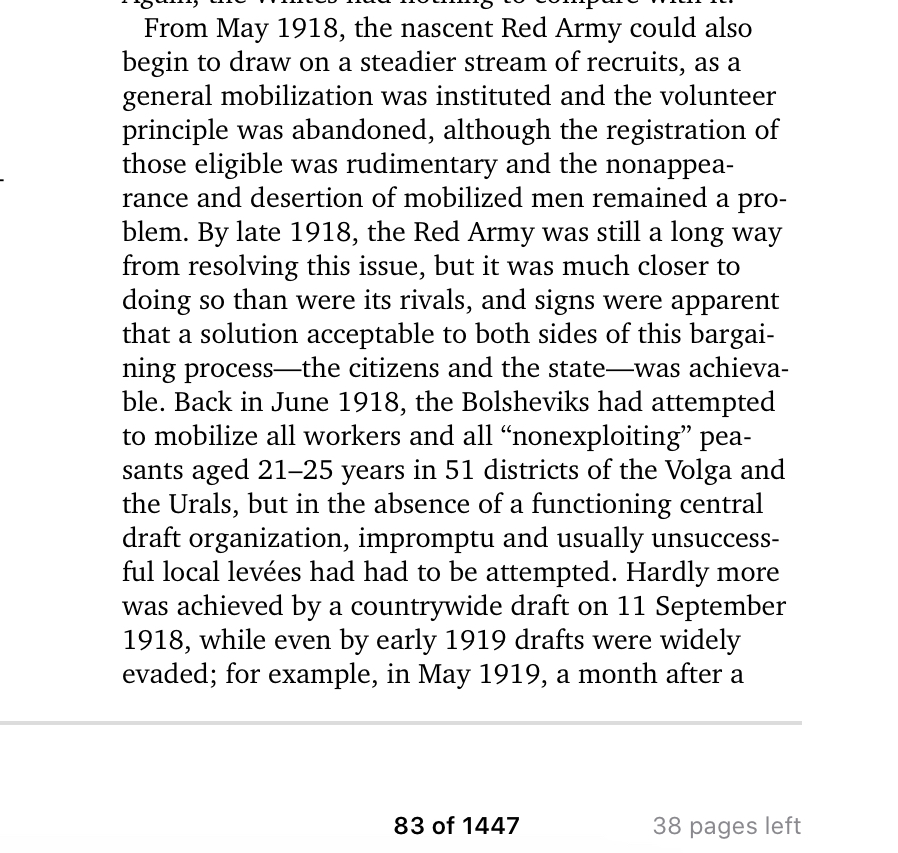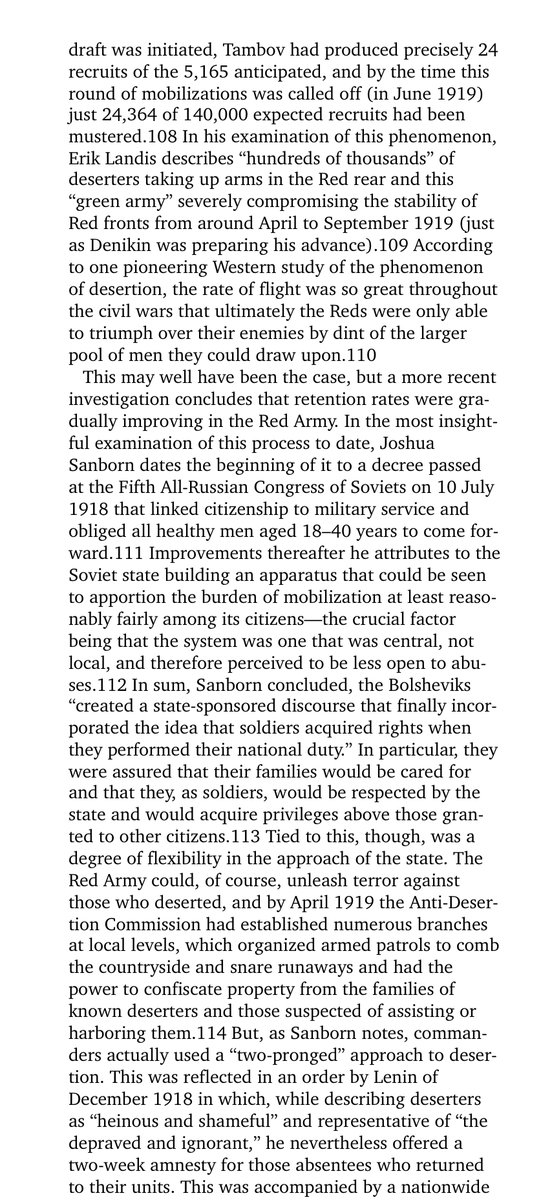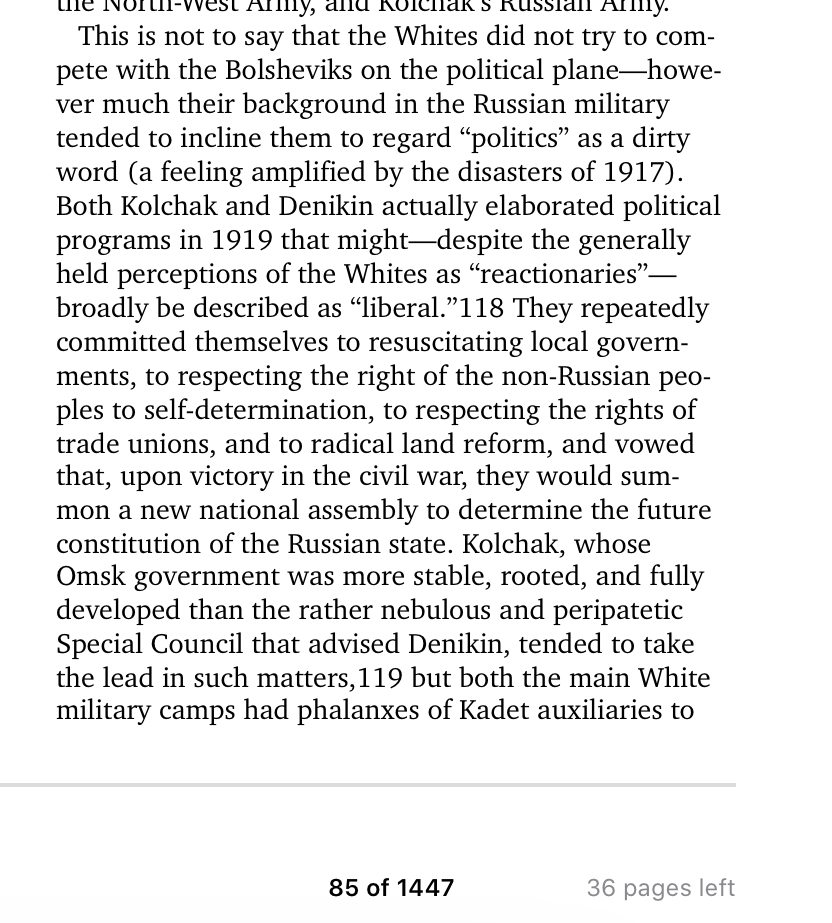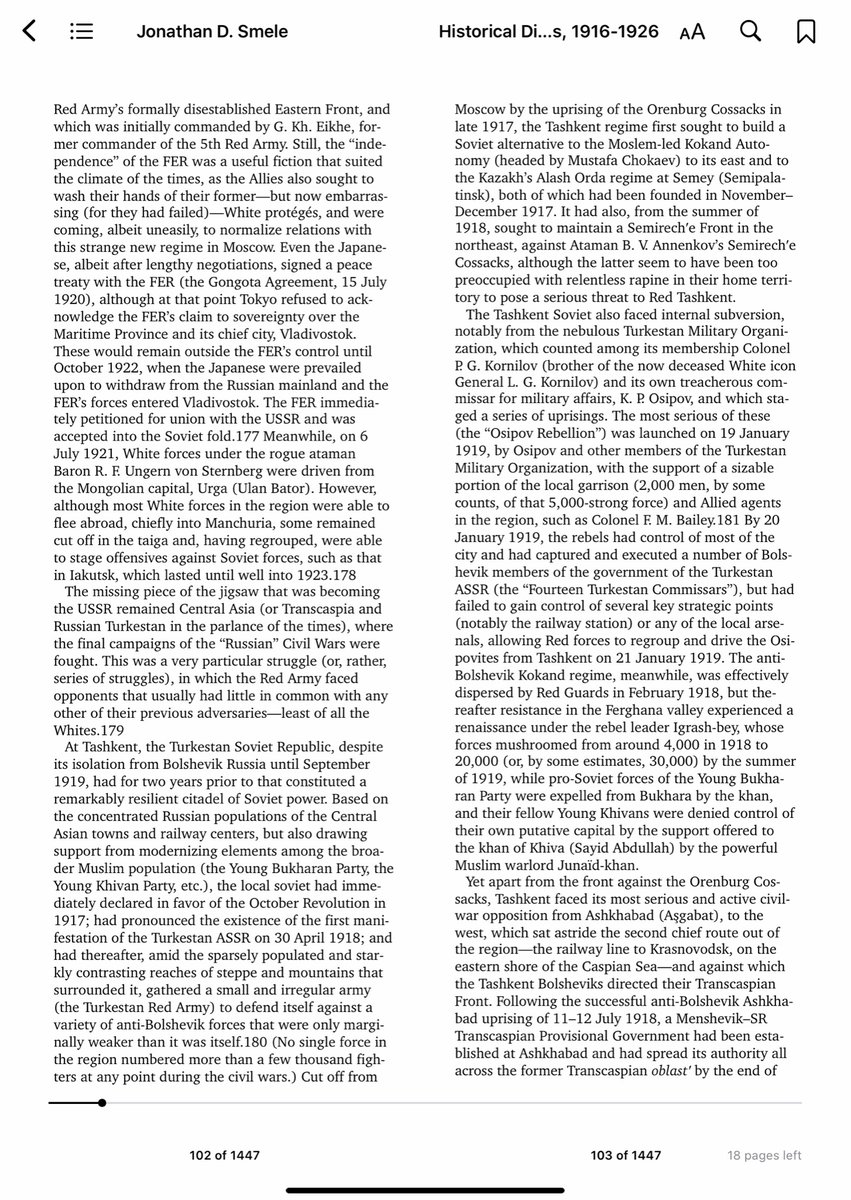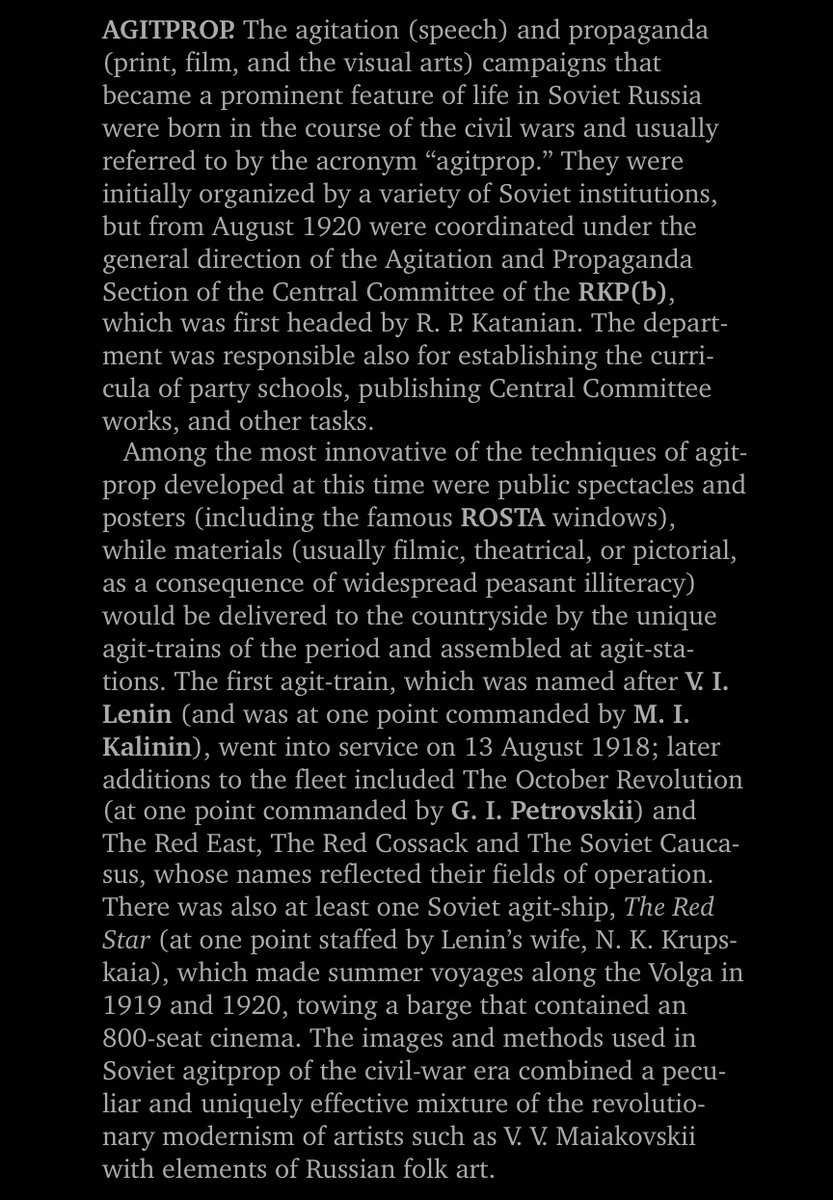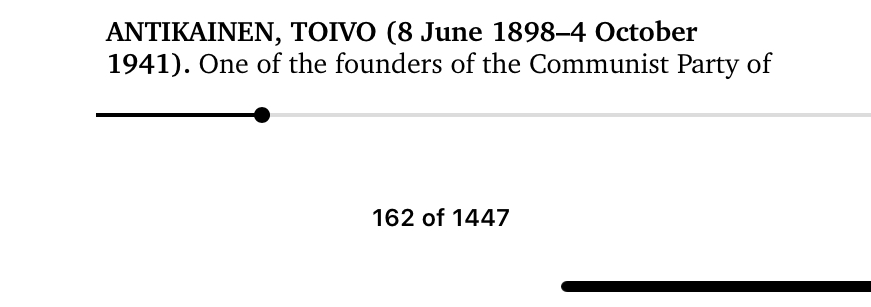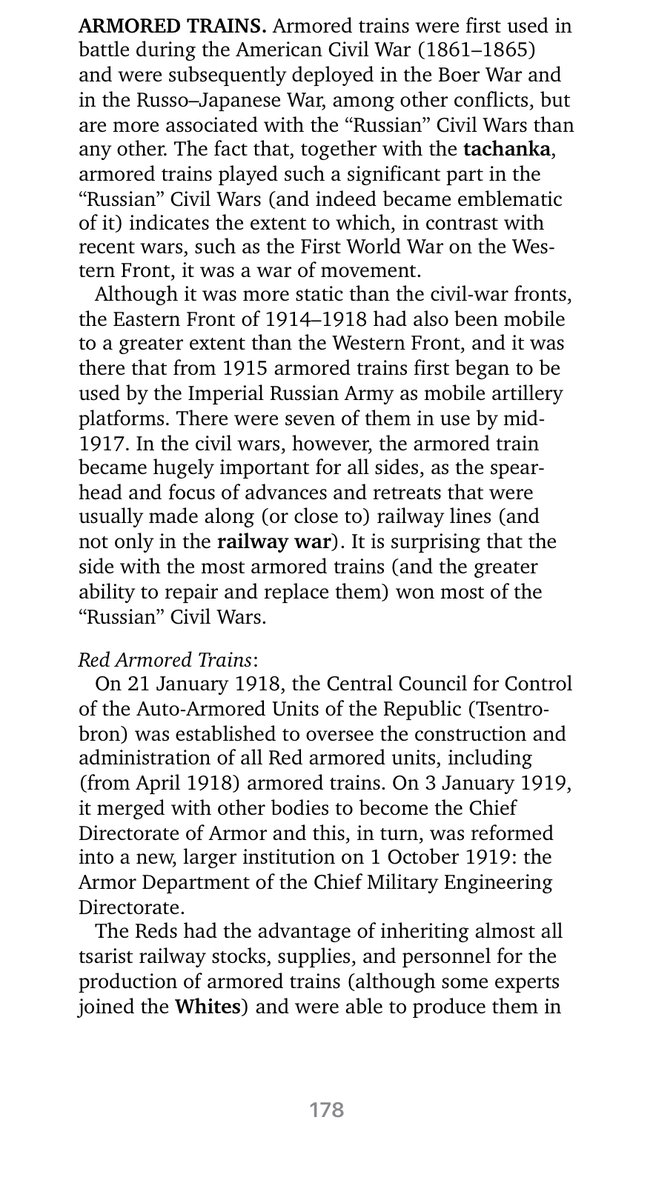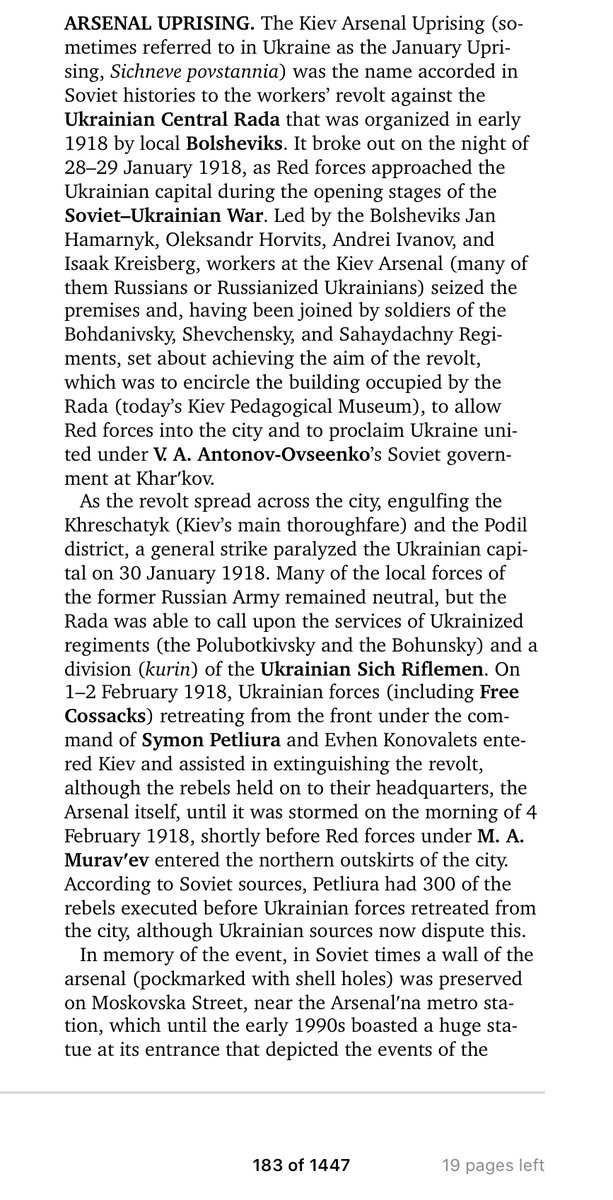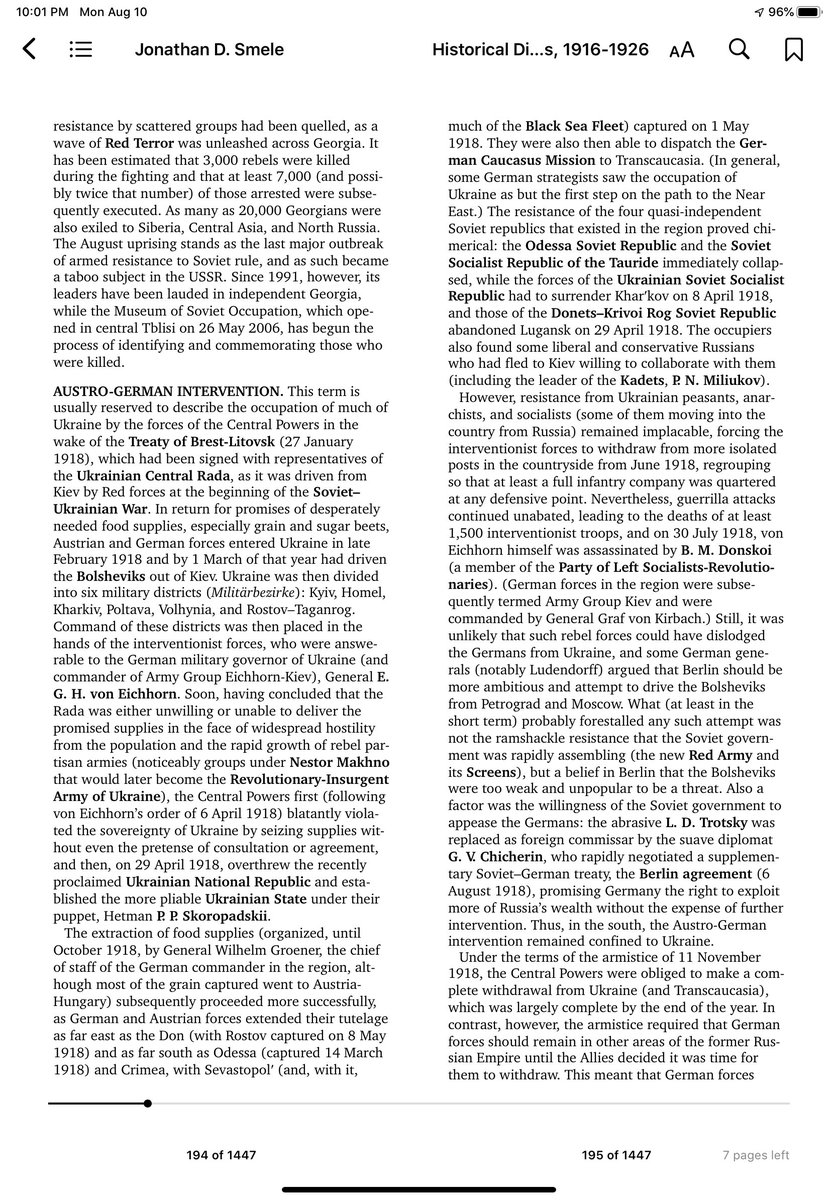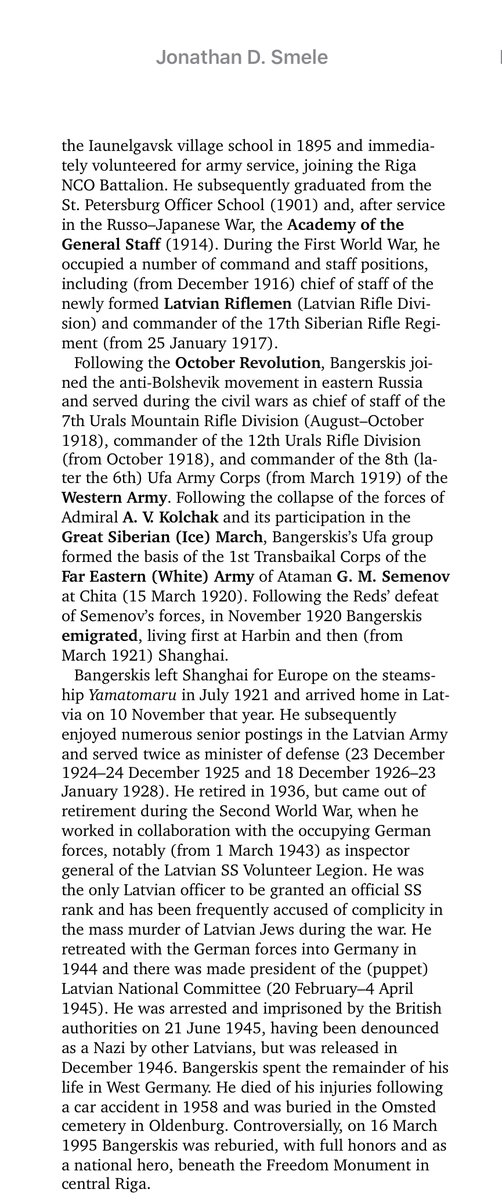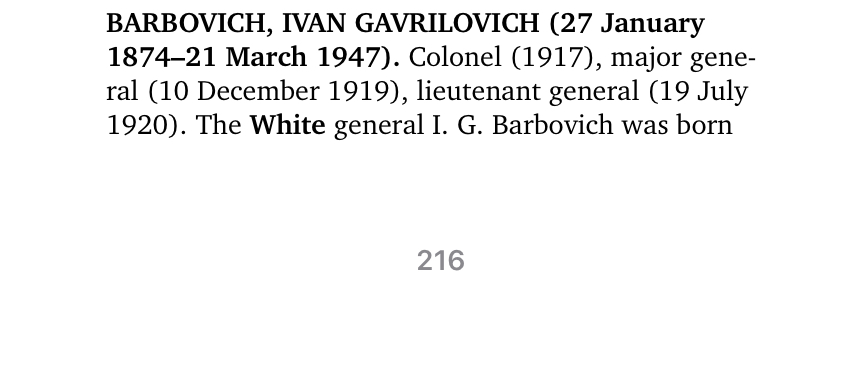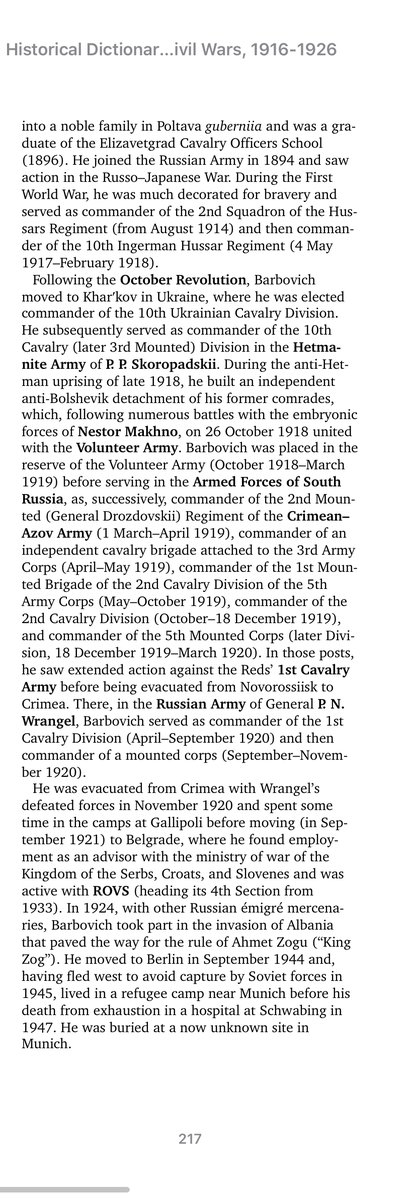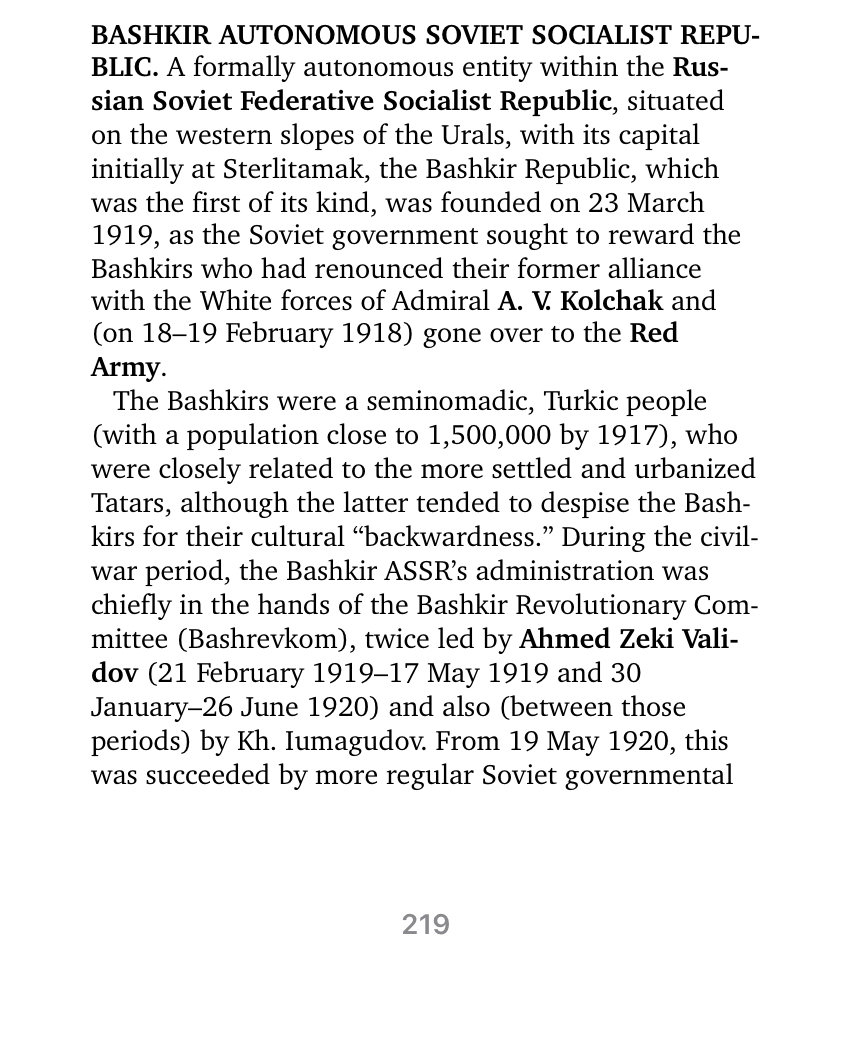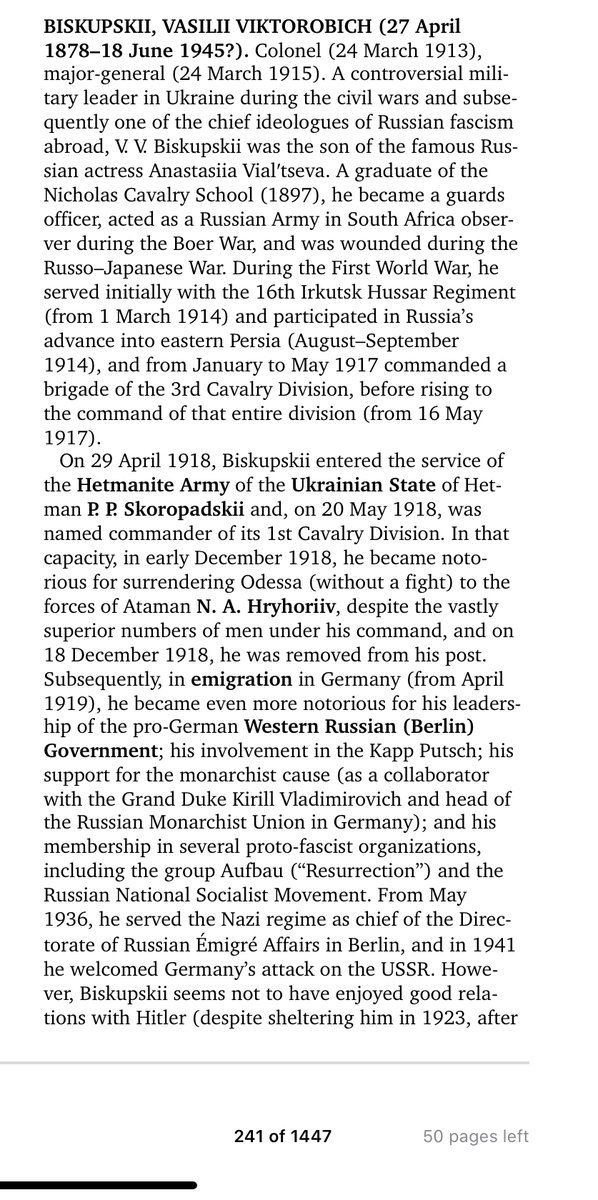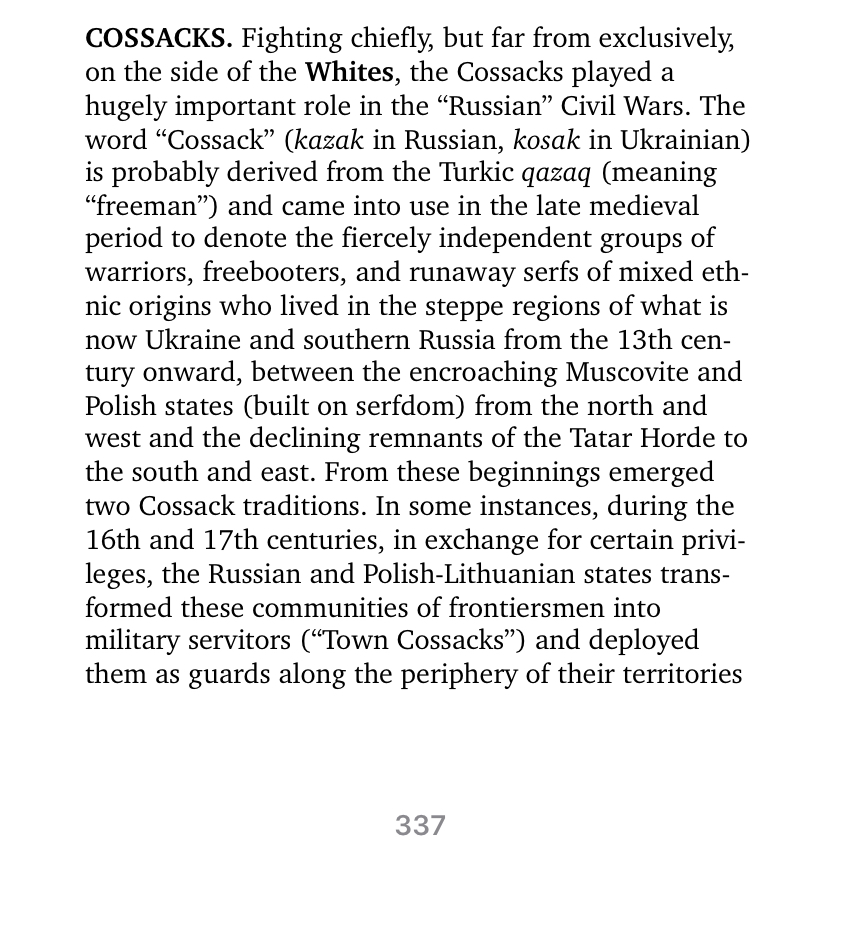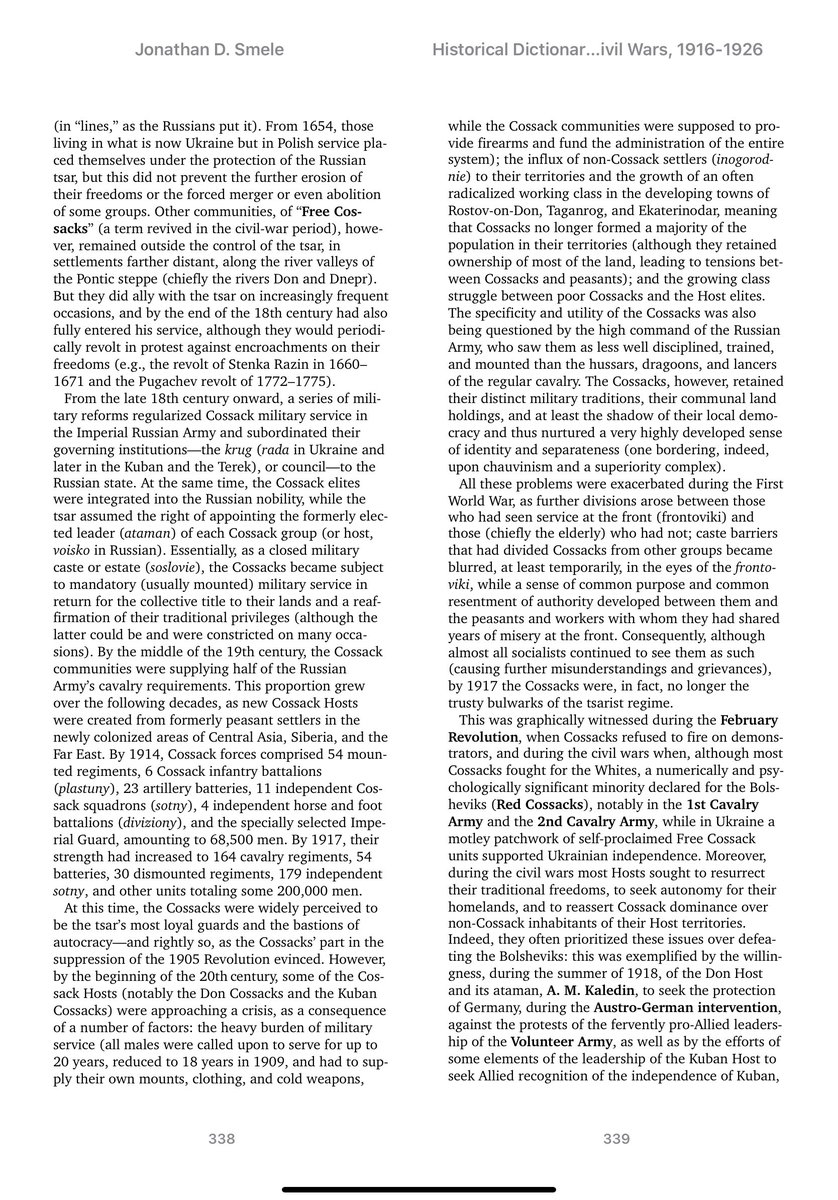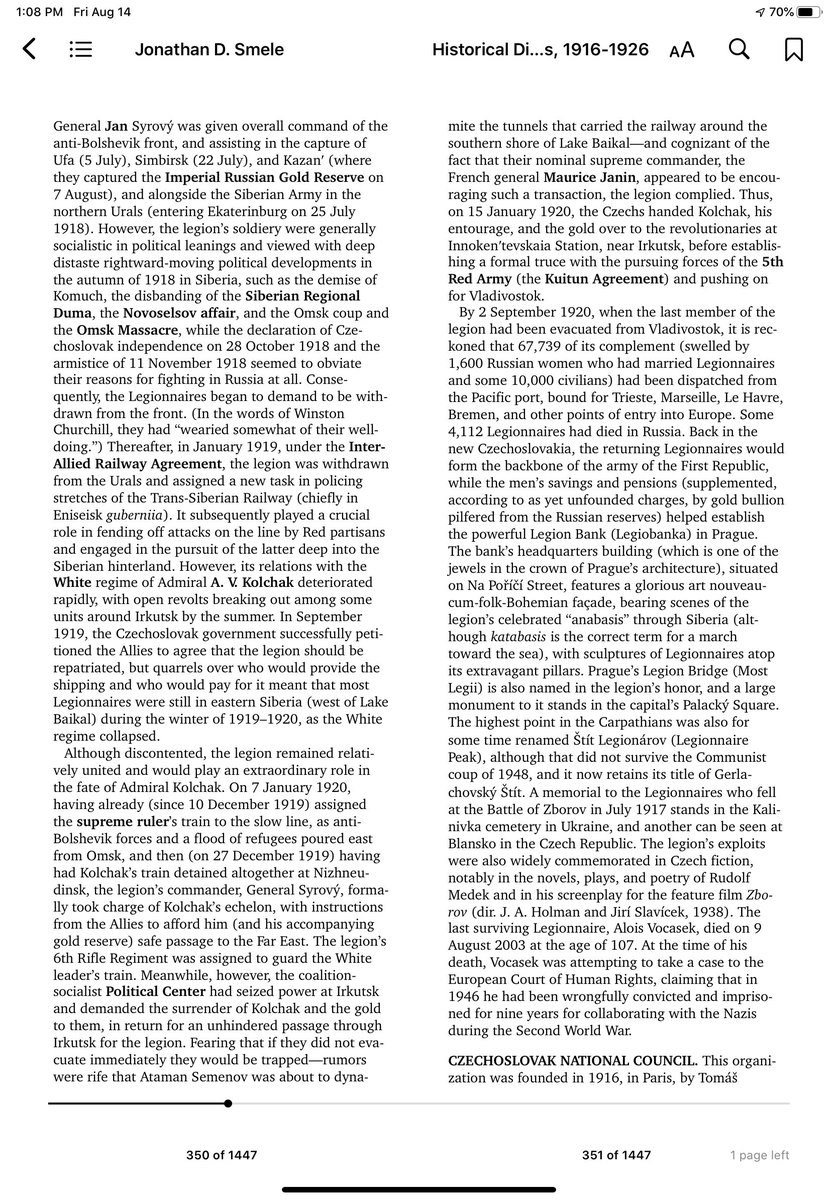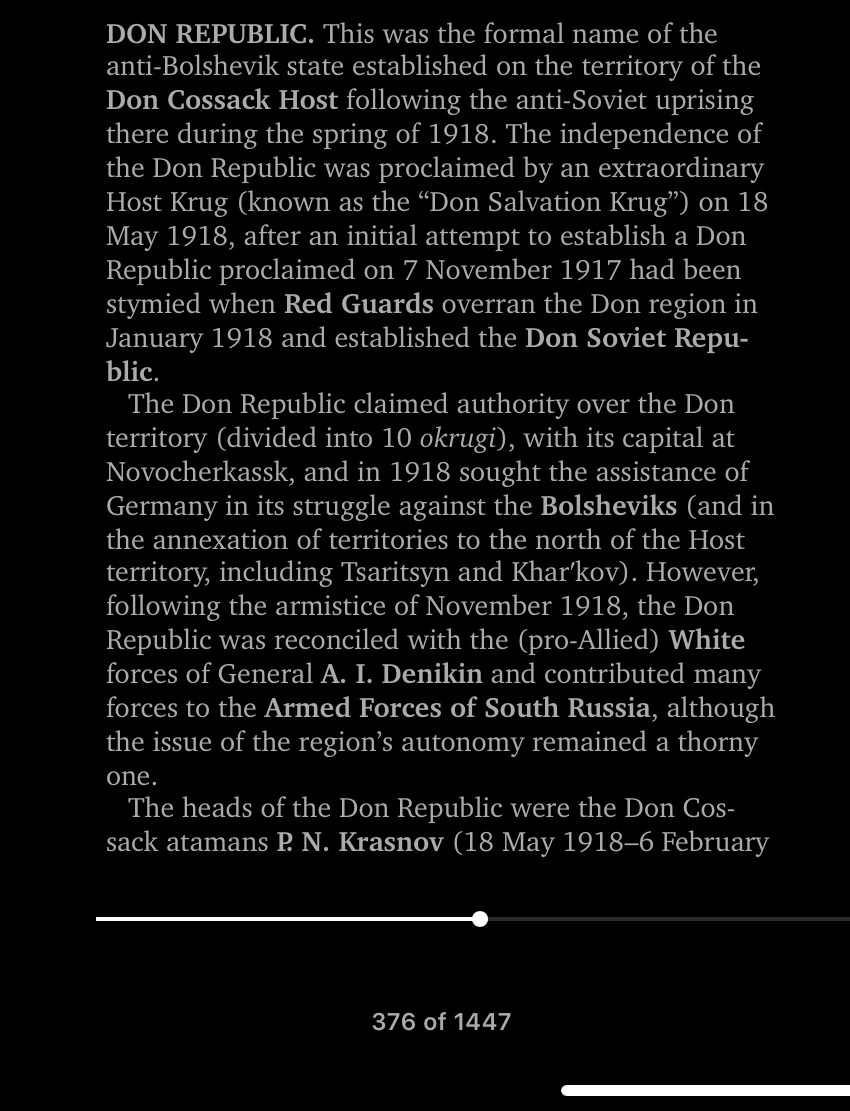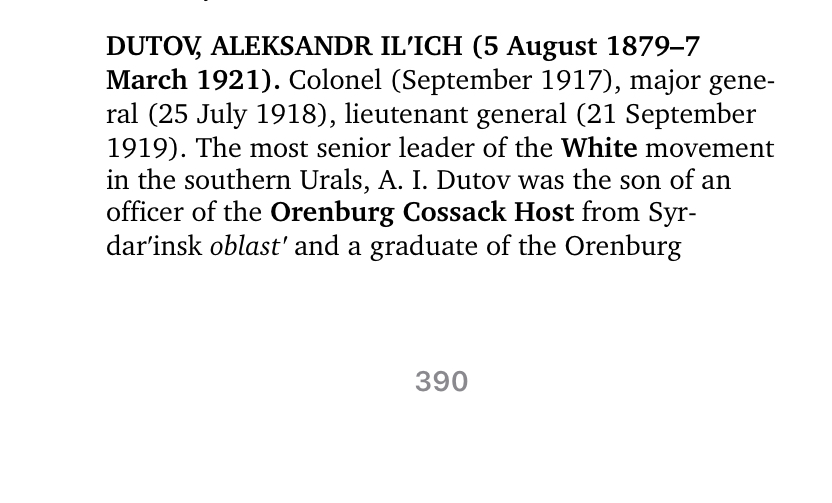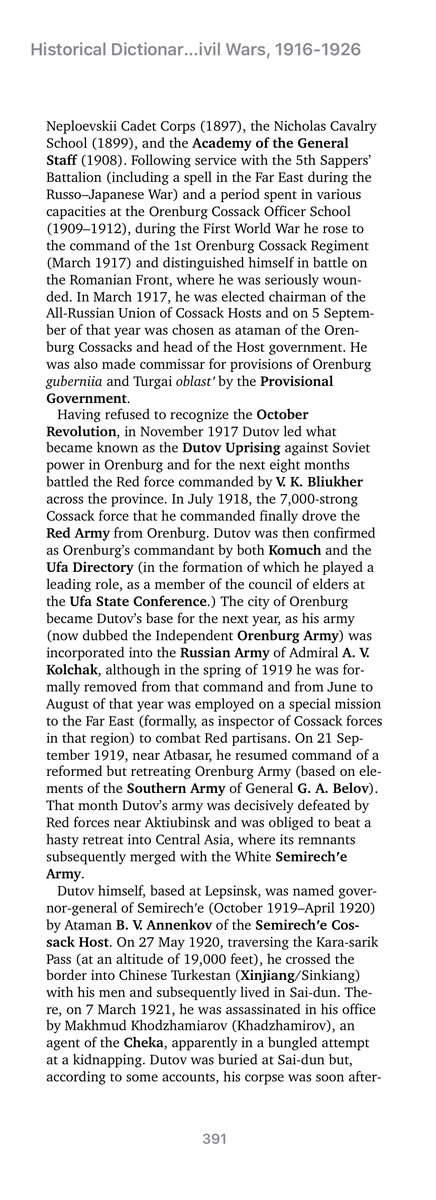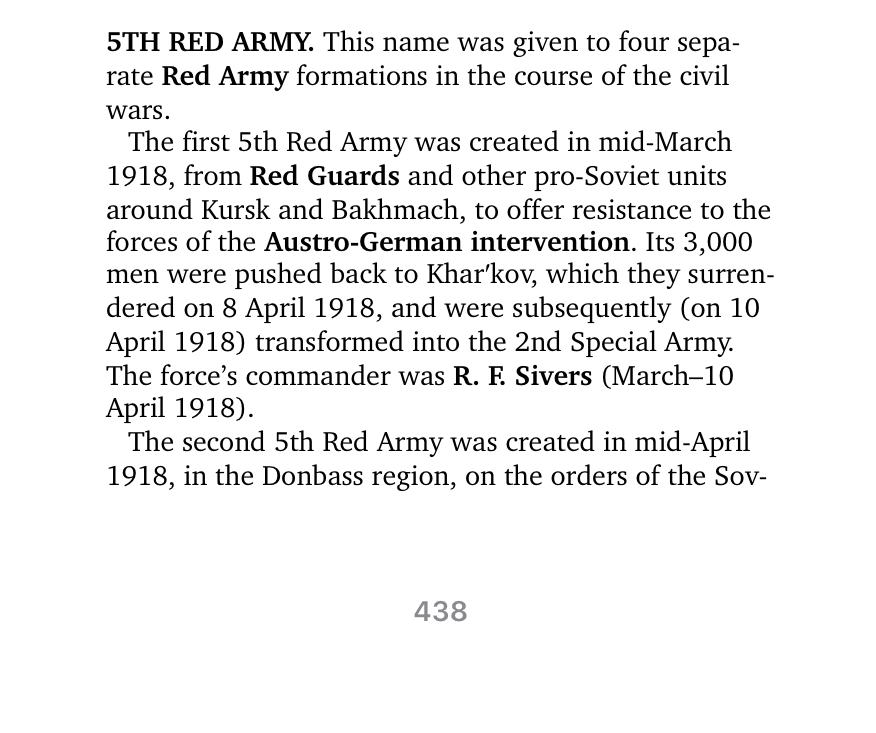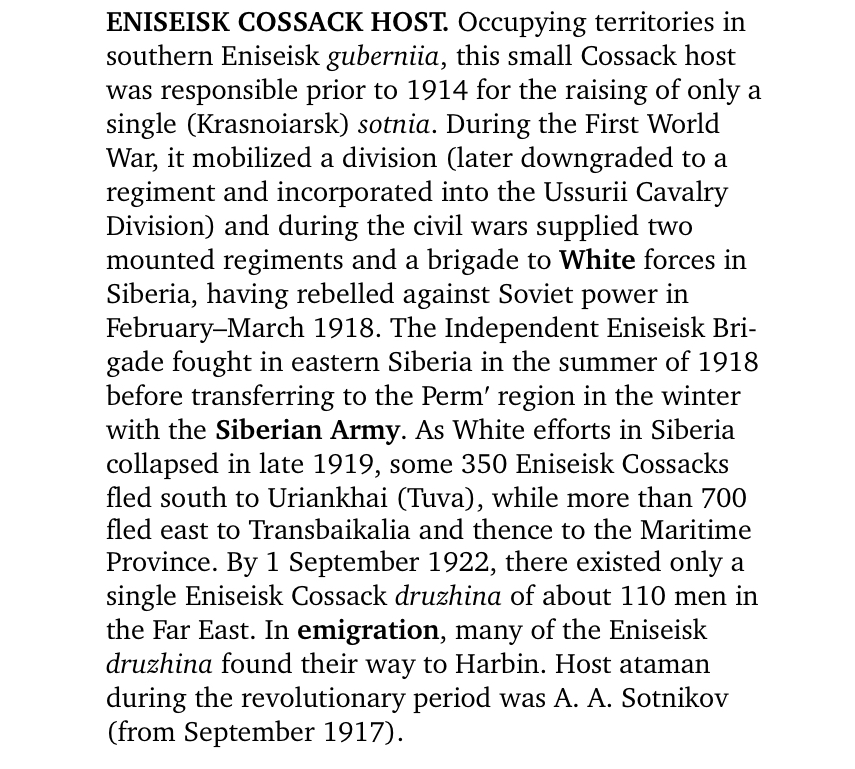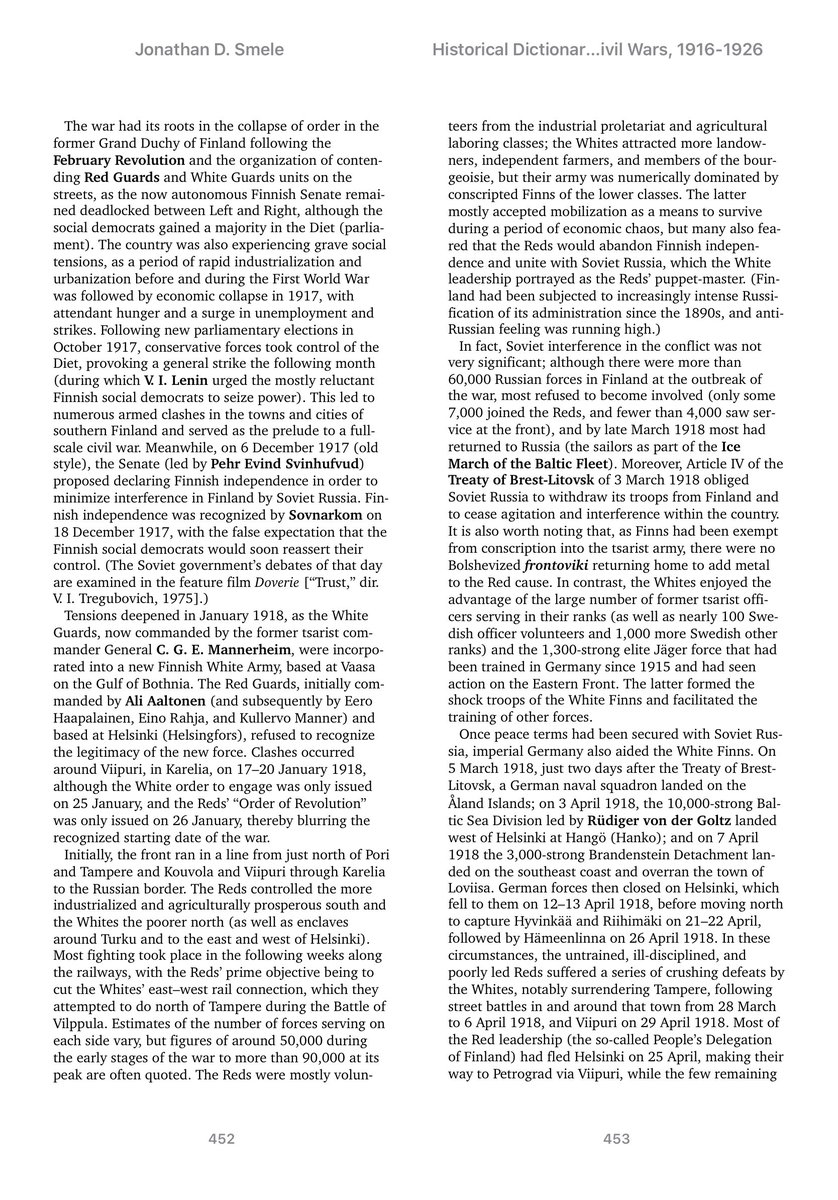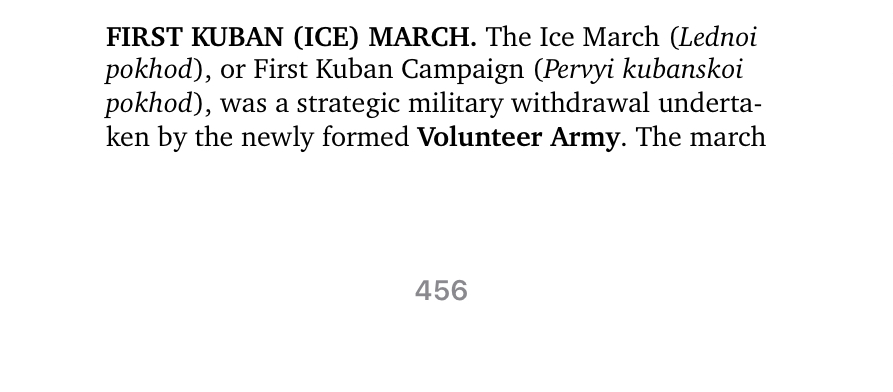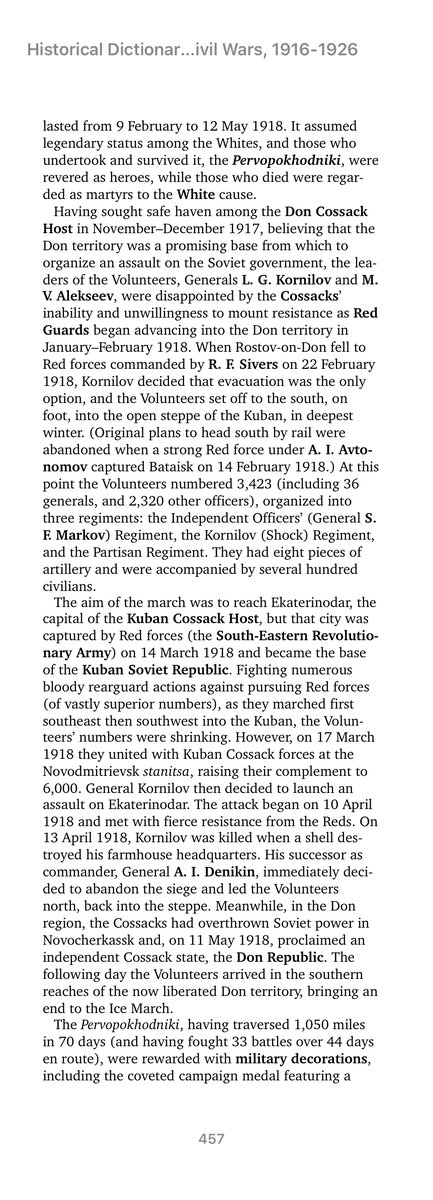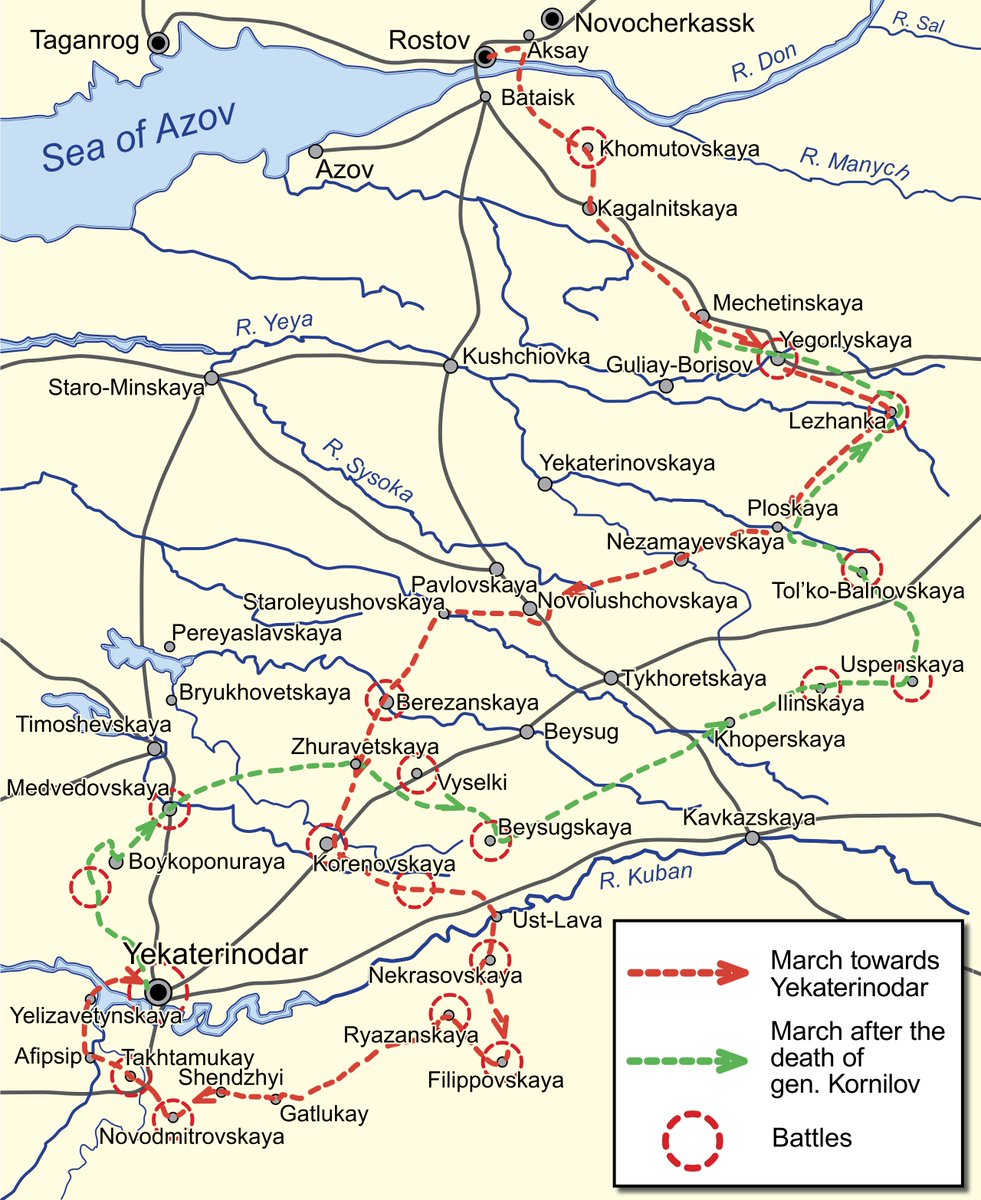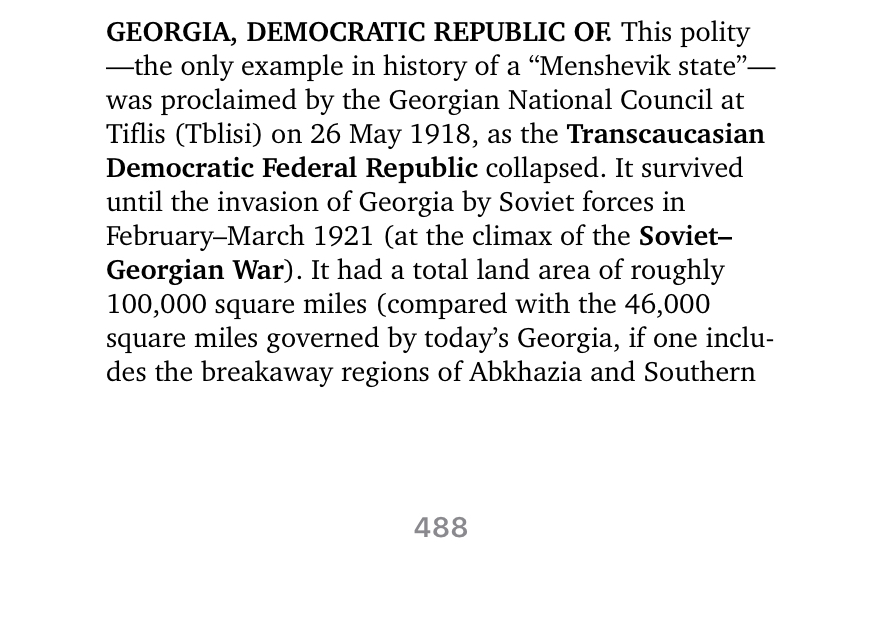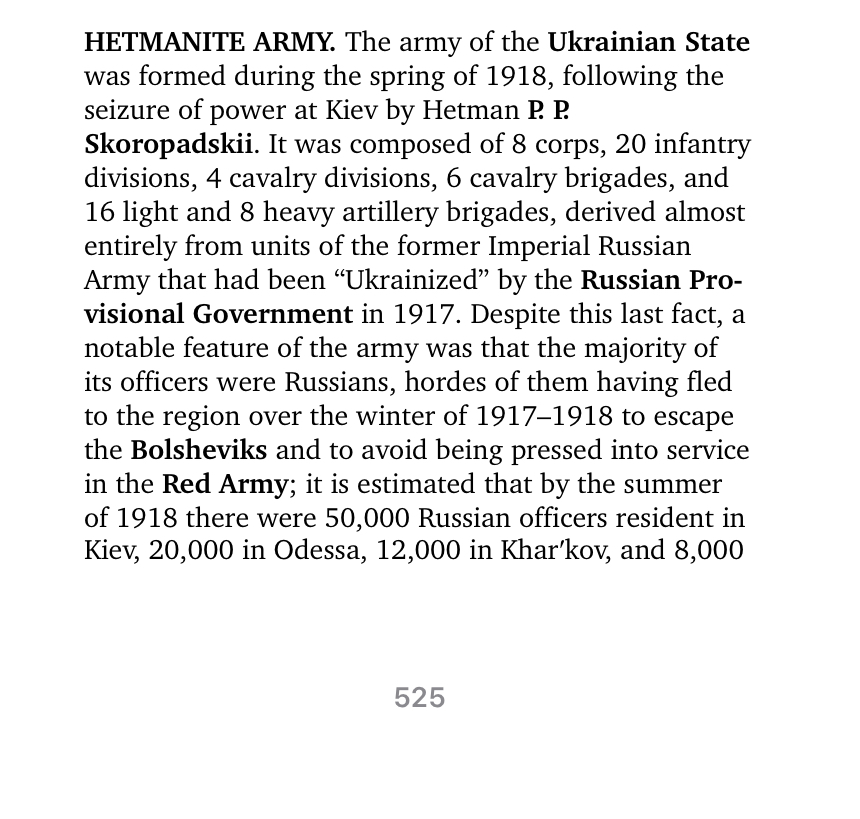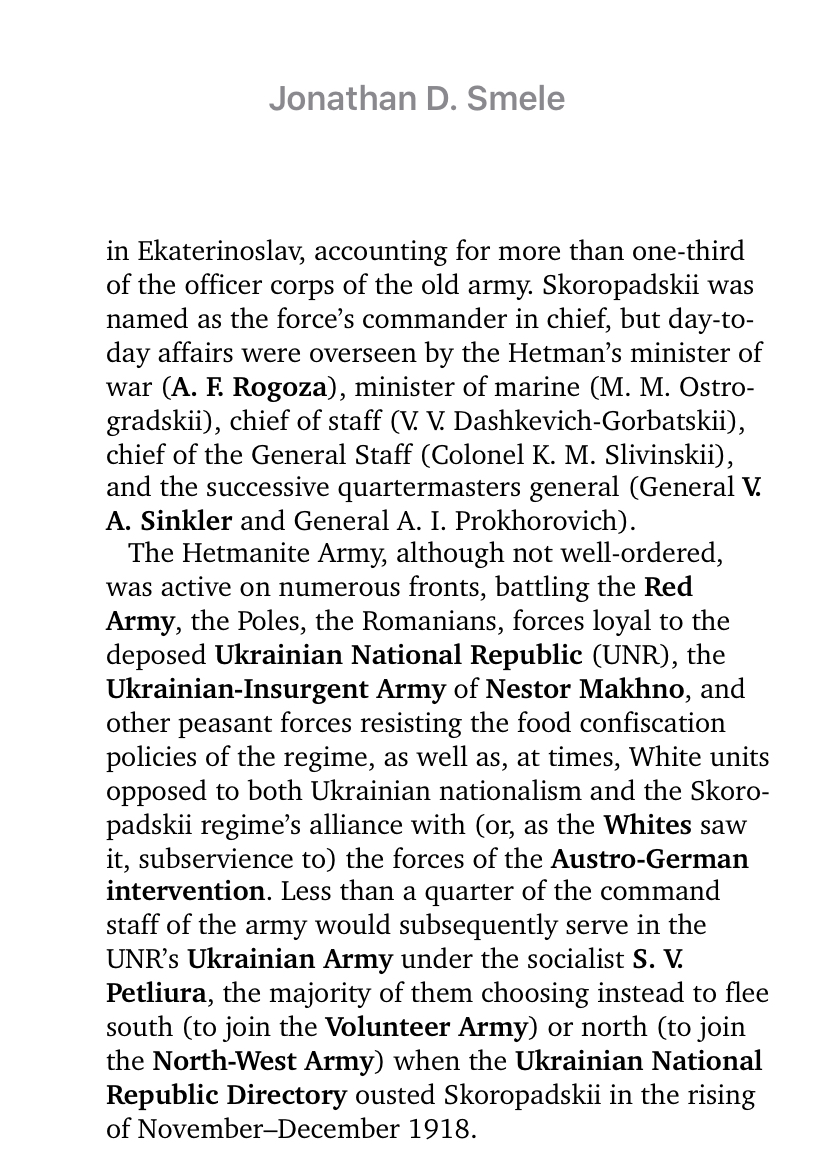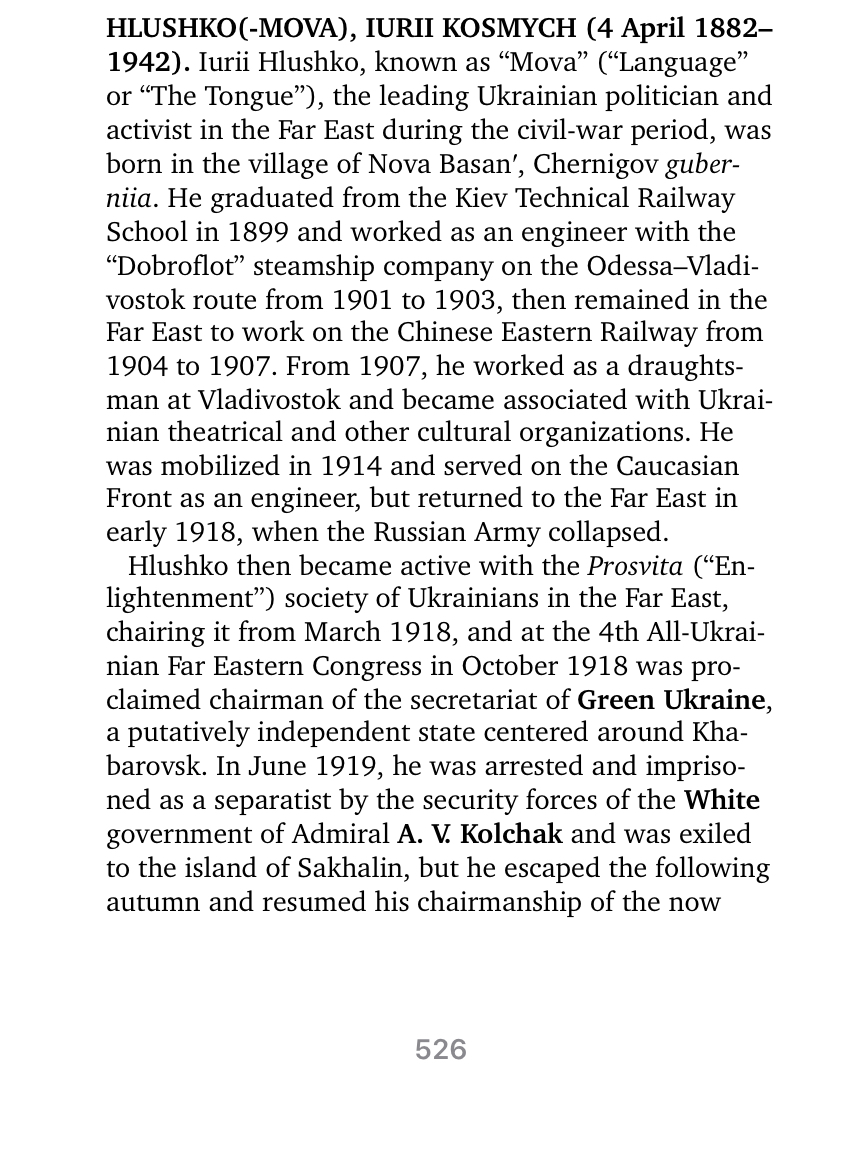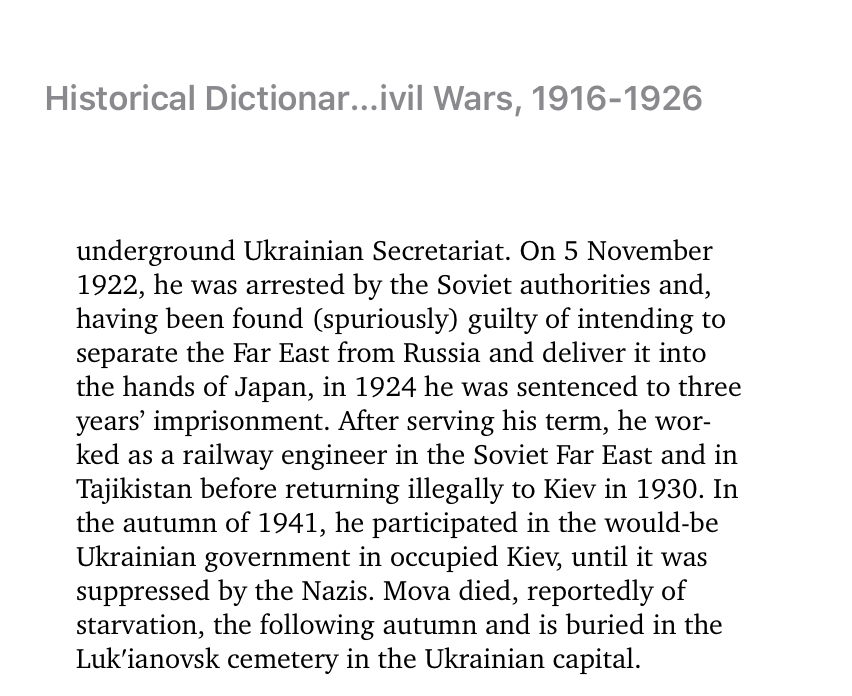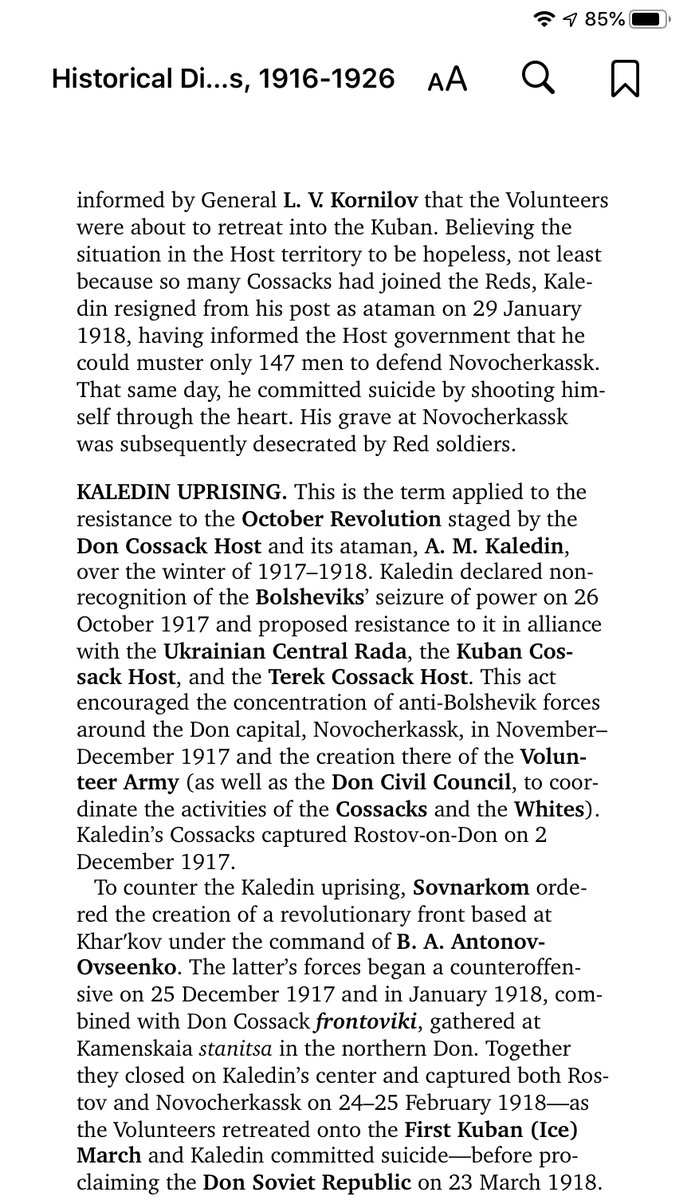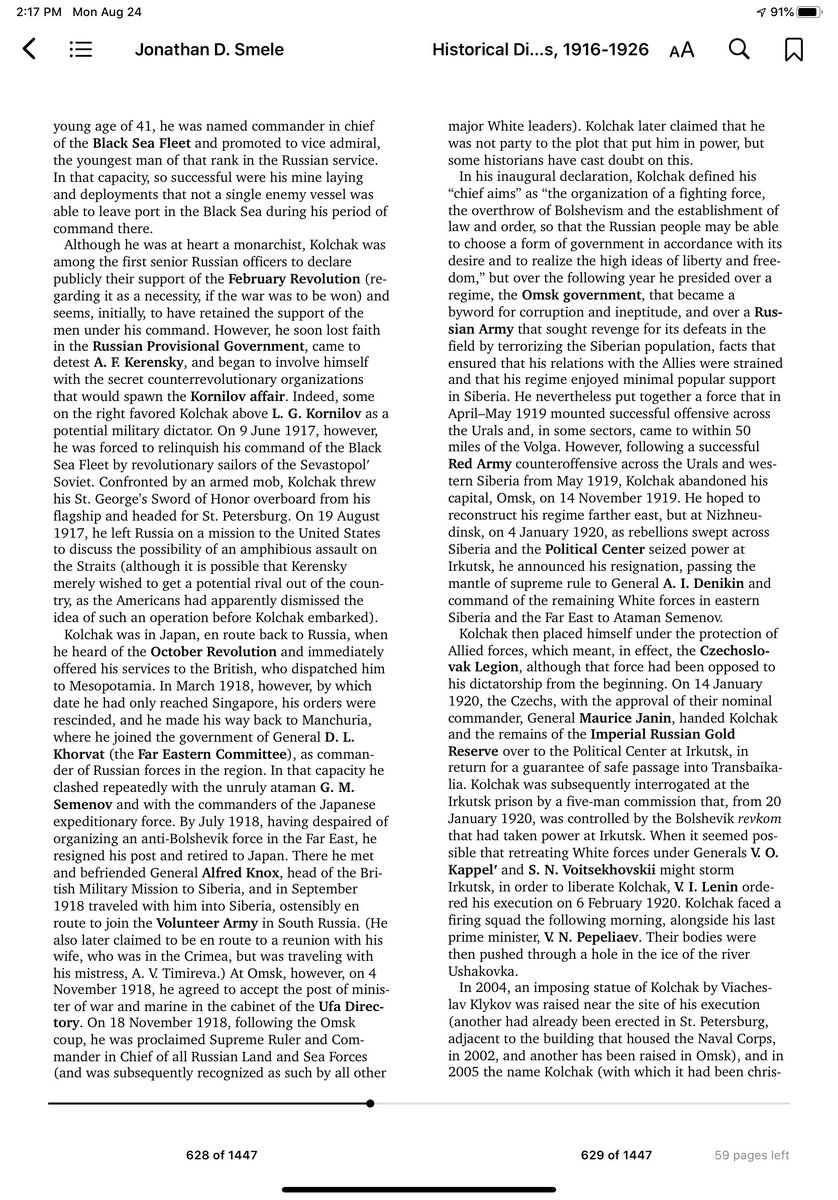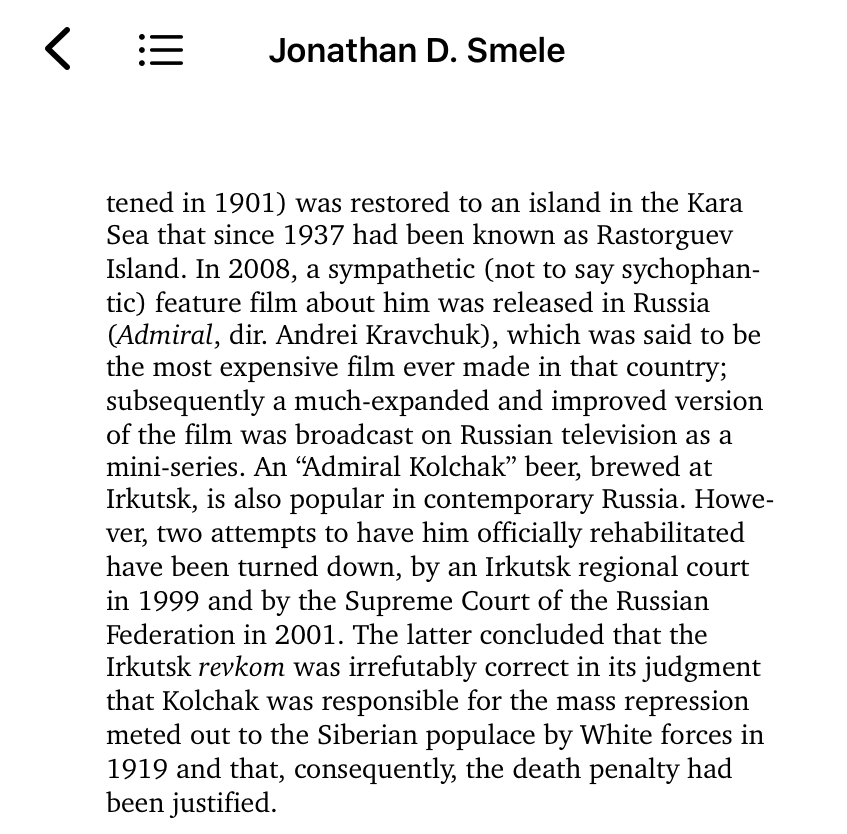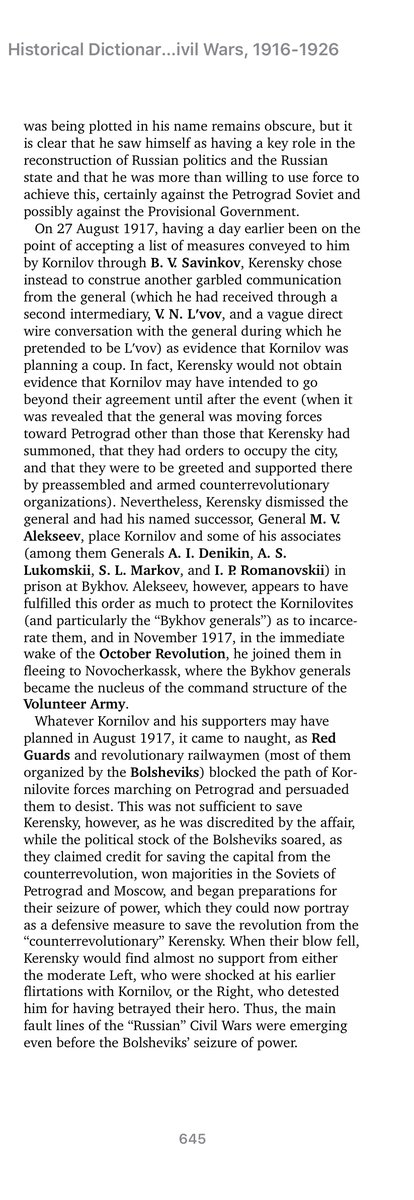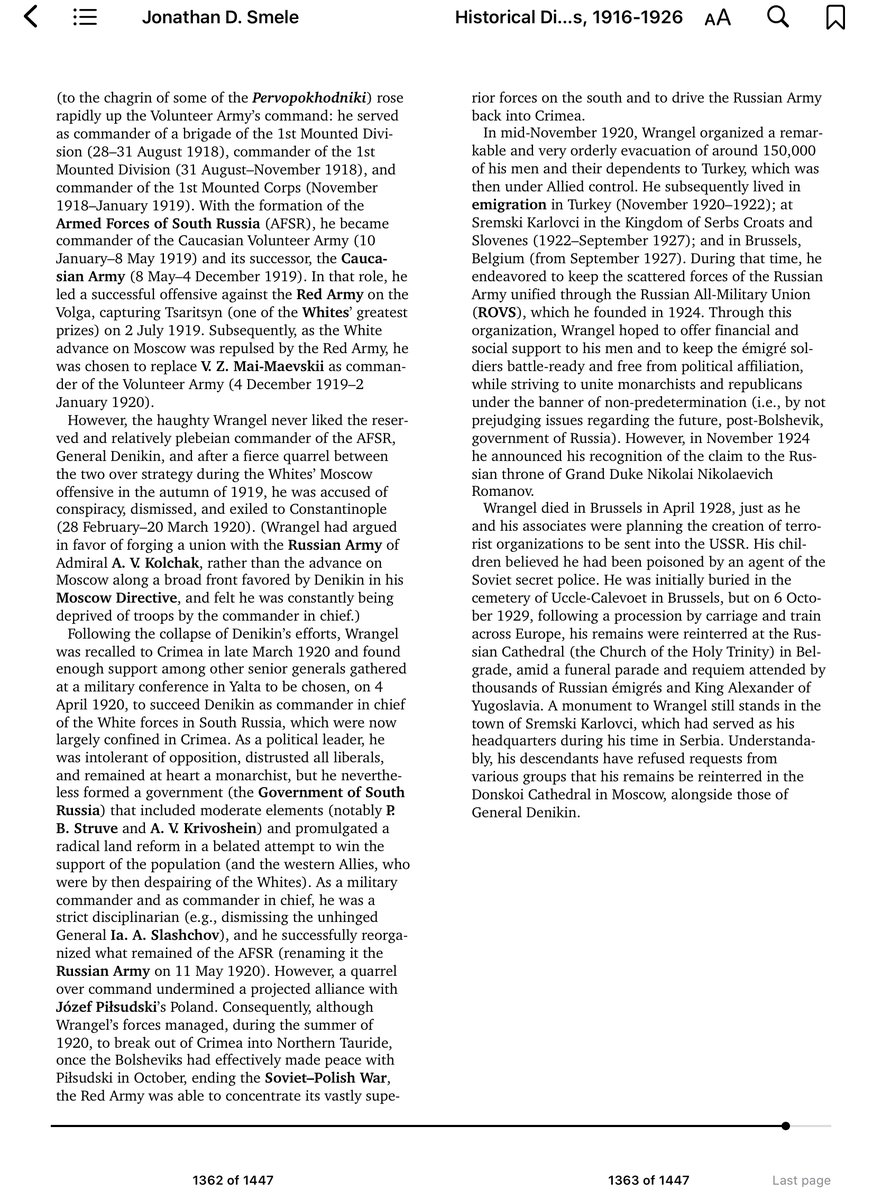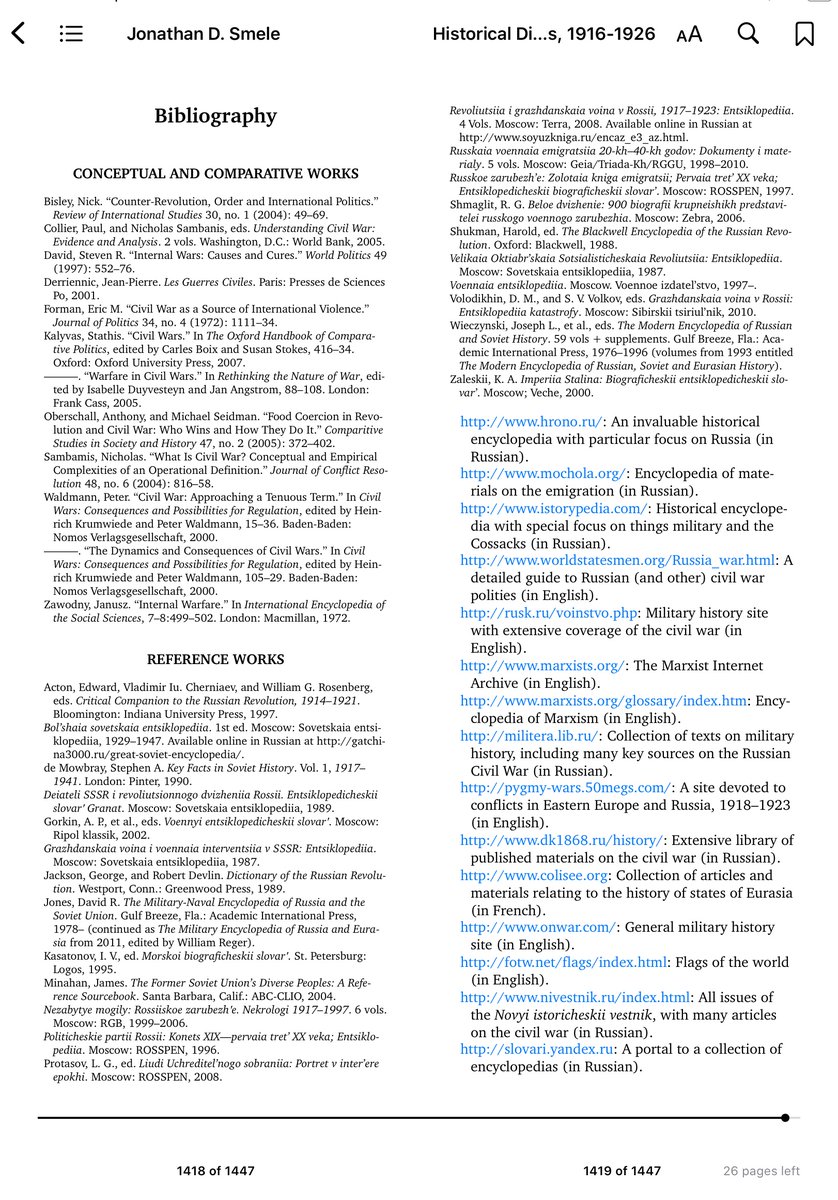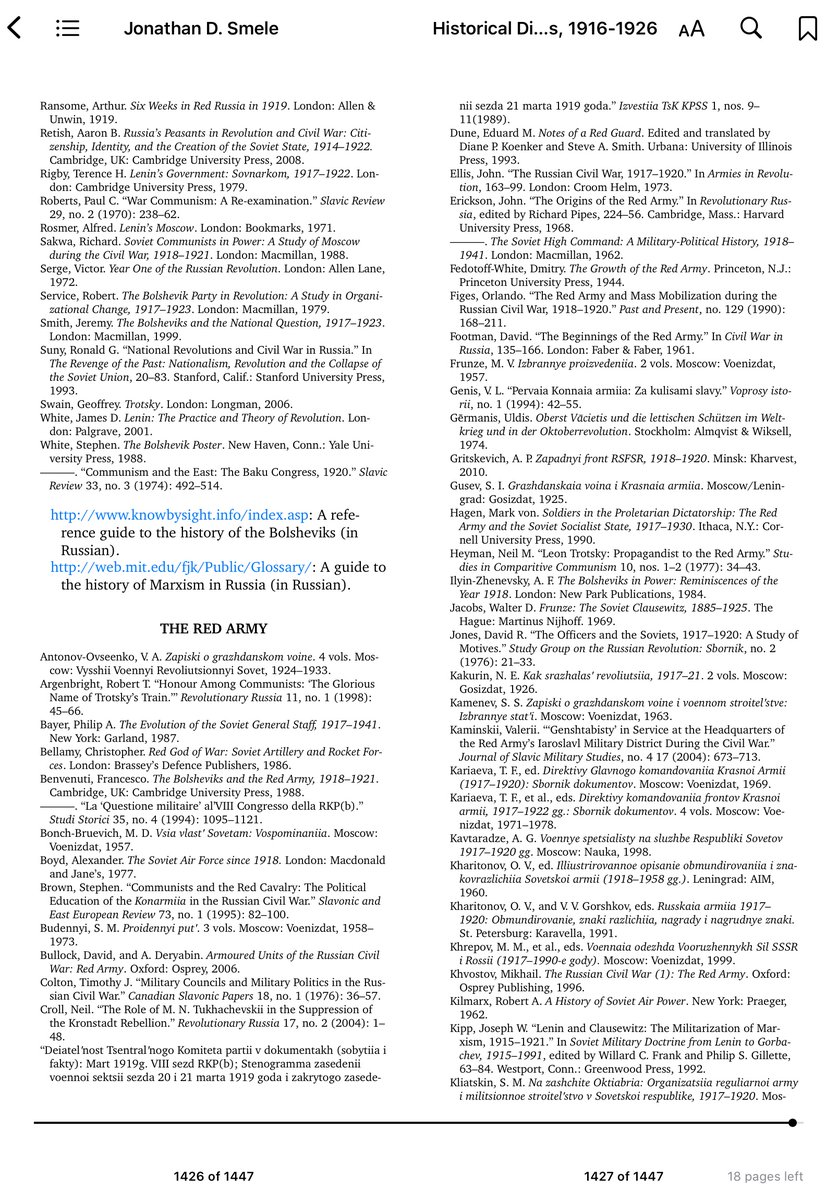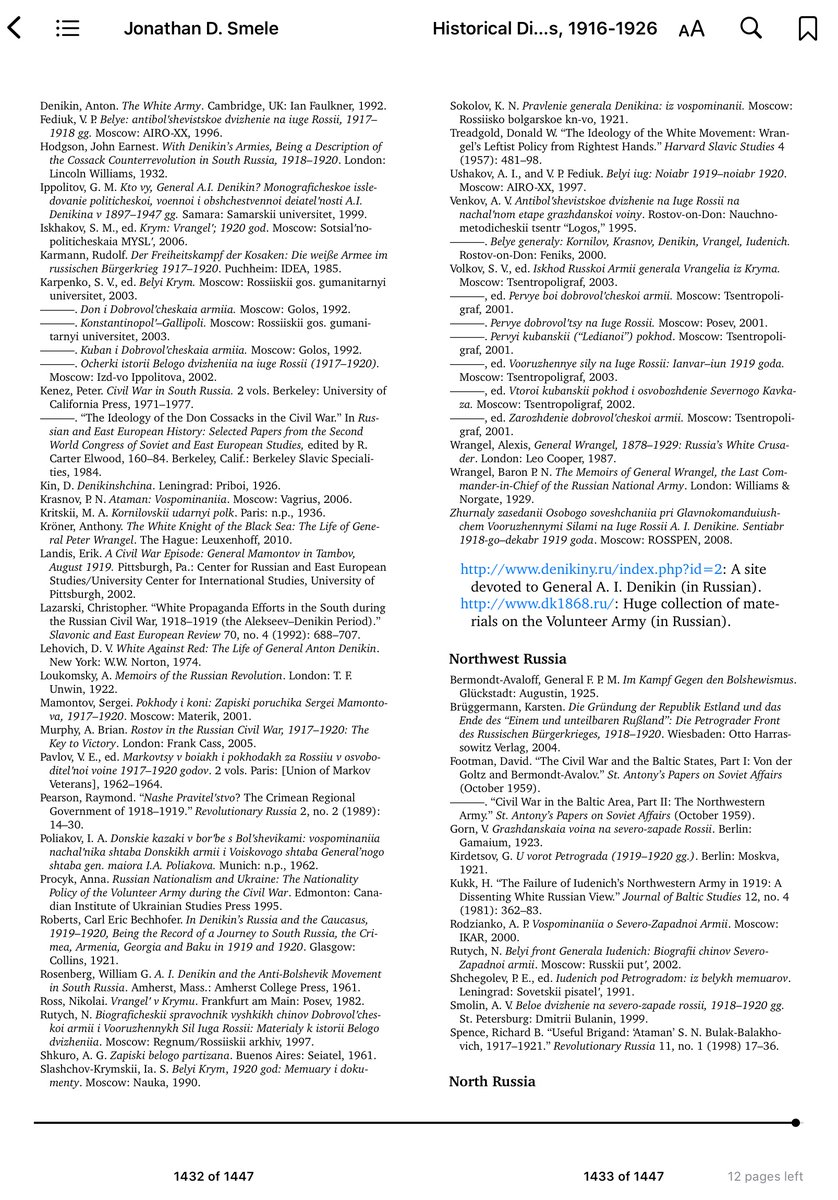This will be a thread on the largest reference works that historian Jonathan Smele ever wrote, the two volume historical dictionary of the Russian Civil Wars. This will only be occasional posting, because the work is about as dense as you can get. But will put up rare infos.
Much of the first part of this work is more or less a restating of his history, which is $700 dollars cheaper, but I will post these relevant passages about the Red Army and it’s early ideological driven disasters and departure from “Democratic militarism model”
After the disasters of the ”11 day war”, the Czechoslovak Revolt, and an entire army dying in the Caucasus against a few thousand whites, the soldiers committees disappeared. Commissars and War Specialists became the organizational hierarchy of the Army. Still near half deserted.
The Red Army also began a conscription census policy, that was widely unpopular and shirked at the beginning, but as more critical accesses to food and government services/patronage were denied to draft dodgers, peasants flooded into the Red Army for money, food, and citizenship
The Whites had a problem with forming a civic base to implement things like the Bolshevik verification of the draft and the commissars for the unruly elements of their movement, much of this was bread in the trauma of February when the army became political only to collapse.
The Tashkent Soviet was subsumed by TransCaspian provisional government, combined with the Emirs, almost rendering Central Asia independent. If Great Britain had taken advantage of this, she would have won “The Great Game.”
Shows how much the war had taken out of British spirit.
Shows how much the war had taken out of British spirit.
The Basmachi killed perhaps half a million Red Army soldiers, setting the scene for horrific reprisals.
Maybe controversial but I loved “9th Company” about Soviet Afghan war that has a confrontation scene with a stand in figure for Basmachi remnants in the USSR.
Maybe controversial but I loved “9th Company” about Soviet Afghan war that has a confrontation scene with a stand in figure for Basmachi remnants in the USSR.
This perhaps explains the previous 500k figure as not “combat deaths” but all Red deaths in Central Asia as this is how he gets the 10.5 million fatality figure. He puts terror deaths at 2 million
The original Agitprop, portrayed well in the newer Russian TV series Trotsky.
Touring trains and boats with cinemas and projectors.
Touring trains and boats with cinemas and projectors.
The Red and White Airforces in the Civil War. Wrangel seems to have been the most sophisticated commander of rudimentary AirPower in the Civil war, making repeated and routine usage of it with armored cars, tanks, cavalry, and infantry assaults. Esp the Perekop Isthmus offensive.
Akulinin, the Orenburg Cossack Host historian (who also wrote a Uralic Cossack history in Beloe Delo) Nominally under Kolchak, both Ural and Orenburg Cossack hosts were far removed from actual control. Akulinin, in fact, lead the great retreat of survivors to Denikin’s territory.
Very important passage to understand the mobility of the Russian Civil War. The Armored Car, Armored Train, and Machine Gun cart were the staple instruments of war, acting as mobile artillery and pillbox platforms. The Whites captured many because they were staffed by Bolsheviks.
One of the greatest facilitators of Mai-Maevsky’s role up and the seeming disregard of Denikin for linking up with Astrakhan and Kolchak was the fact he did not have the room to deploy his captured trains where there was no line. Strategic bottleneck around successful instrument.
The Arsenal uprising in Ukraine late January 1918 as the entire front was collapsing to the Germans. Brest Litovsk negotiations were already concluded by the Rada separate from the Soviet, and this episode would inspire the Germans to remove the Rada after they got to Kiev.
Smele thinks that the Austrian-German intervention was fundamentally more historically important to the Civil War than the Allied Intervention, I tend to agree, especially with the essential victory over the Bolsheviks, but then subsequent implosion of “Mitteleuropa”
If you follow my other threads on the Russian Revolution, you would realize how bad this makes Mr. “Stupidity or Treason“ look.
Seriously fuck Milyukov.
At least Kerensky tried to hold on and was then taken away from political life at least in an American Embassy car.
Seriously fuck Milyukov.
At least Kerensky tried to hold on and was then taken away from political life at least in an American Embassy car.
Two very different stories on what White life was like after the war, and how memory was discarded or kept.
Memory is one of the main things that stand out, you really begin to understand the scale of voenspetsy executions in the 1930’s. after your 50th red civil war bio.
Memory is one of the main things that stand out, you really begin to understand the scale of voenspetsy executions in the 1930’s. after your 50th red civil war bio.
The course of the Basmachi movements and Islamic insurgency put down in the mountains of Central Asia. Smele does not cite the 1916 revolt as counting to the Basmachi.
Makes you think about the theoretical results of a second Andropov decade in Afghanistan.
Makes you think about the theoretical results of a second Andropov decade in Afghanistan.
Manpower, recruitment, growth, and formation of the military-police wing of the Cheka, as well as direct victim counts explicitly of the Cheka (as opposed to other organs of the Red Terror, namely the army and commissariate)
One of the better summaries I’ve read on the state of Cossackdom at the end of WW1 and Civil War. The definitive history of all Russia Cossacks is yet to appear, though many hosts had excellent historians that survived the Civil War and felt duty bound to relate Host history.
The story of the Czechoslovak legion, and its partisan identification primarily with the Komuch, then Ufa Assembly, and belatedly the Kolchak government despite the reputation Radola Gajda now has as Arch-Satan and Demiurge of Czech nationhood to the Czech left.
Smele’s brief biographic portrait of Denikin, the prewar liberal of a background sympathetic to the Poles, who never strayed from Octoberist convictions on land and government, but like many Kadets, he had little real political experience in non military policy implementation.
Politics of the Don Cossacks, Don Army, and Don Republic, the biggest political hang up in the first year being the German orientation versus the Allied loyal Volunteer Army. At night the Don contributed 57,000 men to the Armed Forces of South Russia but also biggest Red Cossacks
Alexander Dutov and the Dutov Uprising in Orenburg. It’s telling that the Cossack Hosts, in the absence of authority, were the first areas to reassert atamanschina as independent political entities. For better or worse, they did this easier than any other Anti-Bolshevik polity.
A general indicator of the quality of the Red Armies at the start of the Civil War was that often the Reds were on their 3rd or 4th reformation of Armies by the Polish-Soviet War.
The 1st 11th Army of 120,000 men faced Peter Wrangel, and was almost completely destroyed to a man
The 1st 11th Army of 120,000 men faced Peter Wrangel, and was almost completely destroyed to a man
Even small hosts stayed together in the Civil War and emigration. Often maintaining the Host structure in exile and eventually across generations before many moved back. I have met a person IRL who claimed to have connections to these men, no mention in Tuva national museum tho.
And the end for today’s dictionary posting, the one unambiguous front the Whites were victorious on, and united with the Germans and Swedes, and instituted a civilian purge larger than the Reds! (In this limited area)
Still 100 years on, and historical legacy looks different
Still 100 years on, and historical legacy looks different
Georgian affairs in the Russian Civil War. Out of all the Republics, this one was probably the most clueless. They could have solidified their independence and took away the bad feeling of the Entente pretty easily after the 2nd Kuban campaign. Mensheviks most sig contribution.
The very Russian army of the Ukrainian Hetmanate briefly included Peter Wrangel, who swiftly became disillusioned with Skoropadsky, but many officers stayed.
Yuri Hlushko, would be Green Ukrainian leader would be thwarted and would later travel the world to collaborate w/Germans
Yuri Hlushko, would be Green Ukrainian leader would be thwarted and would later travel the world to collaborate w/Germans
The unfortunate First Ataman of the Don Cossacks nonetheless played a crucial role in the genesis of the AFSR that would owe its existence much to his work. Few men have probably seen the nadir of despair with the intensity that Kaledin had, but his death would spur action.
This dictionary was written just as Kolchak’s popular image was being rehabilitated in Russia, though the court not issuing full rehabilitation means that some materials are still withheld do to legal issues. “Kolchak and the court of history” is excellent on this issue.
“K” is a very important letter in the Civil War alphabet.
The events surrounding Kornilov in mid 1917 are a good point to “start” the Civil War, but his image remained relevant throughout the fighting and immigration. The Kornilovtsy long outlasted the man himself.
The events surrounding Kornilov in mid 1917 are a good point to “start” the Civil War, but his image remained relevant throughout the fighting and immigration. The Kornilovtsy long outlasted the man himself.
Entente vs German rapprochement was one of the biggest dividers of interwar emigres. Many Baltic Germans and Cossacks ended up in the Germanophile camp or the Berlin Russian community.
A small and sympathetic overview to the Western Ukrainian People’s Republic and it’s role in the breakup of Austria-Hungary and the Civil War.
And to round out the entries, Baron-General Wrangel’s bio, unsurprisingly the most positive of all the white generals.
To round out this thread, I will post the updated bibliography of this dictionary, which includes many things I’ve talked about on this site, and a few I hope to get to, including Chamberlain’s classic and Wildman’s “End of the Imperial Army”.

 Read on Twitter
Read on Twitter

